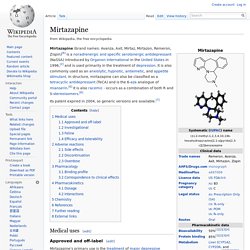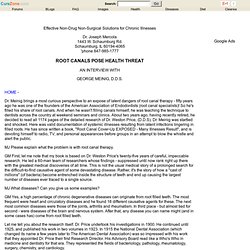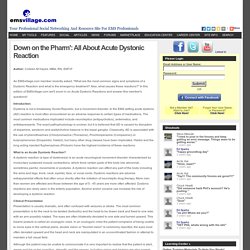

Rise of the Introverts? “Do you get energized by being among others, or by being on your own?”

That is the core of various questions about your inclination towards extraversion or introversion. XIPs find the resulting label often confusing, especially if their real answer is: “That depends.” In this blog I want to clarify why it is relevant for XIPs to be aware of their introverted needs, and to take them seriously, even if their environment tends to go against this. There is also a webpage on this site about Extraversion / Introversion as a facet of Xidentity. Ag @ tsk. 00463528cd68a5afe2000000.pdf. MBCTrelapsedepressionTeasdale2000JCCP.pdf. When Should Schools Start in the morning? This is not really a new post.

But it is not exactly a re-publishing of an old post either. It is a lightly edited mashup or compilation of excerpts from several old posts – I hope it all makes sense this way, all in one place. The sources of material are these old posts: Risperidone (By mouth) - National Library of Medicine - PubMed Health. Multipotentiality: When High Ability Leads to Too Many Options. Intuition versus Logic. Most humans have not been taught logical thinking, but most humans are still intelligent.

Contrary to the majority view, it is implausible that the brain should be based on Logic; I believe intelligence emerges from millions of nested micro-intuitions, and that Artificial Intelligence requires Artificial Intuition. Intuition is surprisingly easy to implement in computers. Intuition and Logic are two strategies for prediction and problem solving. We hear so much about the virtues of logic that we'd be excused to believe that logic was somehow the superior method, but a quick analysis shows that most actions we perform on a daily basis mainly use intuition. Logic is not better, just different. Psychology Tools. Panic and Agoraphobia Scale (PAS) The PAS is a measure of the severity of illness in patients with panic disorder (with or without agoraphobia).

It is available in both clinician-administered and self-rating formats. It contains 5 sub-scales: panic attacks, agoraphobic avoidance, anticipatory anxiety, disability, and functional avoidance (health concerns). Mystic Crystal Revelation. May Day! Psychosomatica. Article. Reversal Theory Society. Reversal theory provides an analysis of the experience of everyday life, showing that a normal person will display different personalities at different times, meaning that he or she will see the world, and act in it, in different ways at different moments.

These different types of personality (motivational styles) are each based on a fundamental motive/value, such as achievement, control or freedom. This implies that human personality has an essentially dynamic quality, and that inter-individual differences cannot be understood without reference to intra-individual differences. The following alphabetical entries may be used either as a glossary or as an introduction to the theory. Memento. Mirtazapine. Mirtazapine (brand names: Avanza, Axit, Mirtaz, Mirtazon, Remeron, Zispin)[6] is a noradrenergic and specific serotonergic antidepressant (NaSSA) introduced by Organon International in the United States in 1996,[2] and is used primarily in the treatment of depression.

It is also commonly used as an anxiolytic, hypnotic, antiemetic, and appetite stimulant. In structure, mirtazapine can also be classified as a tetracyclic antidepressant (TeCA) and is the 6-aza analogue of mianserin.[6] It is also racemic - occurs as a combination of both R and S-stereoisomers.[6] Its patent expired in 2004, so generic versions are available.[7] §Medical uses[edit] §Approved and off-label[edit] ROOT CANALS POSE HEALTH THREAT AN INTERVIEW WITH GEORGE MEINIG, D.D.S. Effective Non-Drug Non-Surgical Solutions for Chronic Illnesses Dr.

Joseph Mercola 1443 W. Schaumburg Rd. Down on the Pharm': All About Acute Dystonic Reaction. Author: Colleen M Hayes, MBA, RN, EMT-P An EMSvillage.com member recently asked, "What are the most common signs and symptoms of a Dystonic Reaction and what is the emergency treatment?

Also, what causes these reactions? " In this edition of EMSvillage.com we'll zoom in on Acute Dystonic Reactions and answer this member's questions! Introduction:Dystonia is not a breakaway Soviet Republic, but a movement disorder. In the EMS setting acute dystonic (AD) reaction is most often encountered as an adverse response to certain types of medications. Memento. Risperidone. Risperidone, sold under the trade name Risperdal among others, is an antipsychotic medication.[2] It is mainly used to treat schizophrenia, bipolar disorder, and irritability in people with autism.

It is taken either by mouth or by injection into a muscle.[2] The injectable version is long acting and lasts for about two weeks.[3] Common side effects include movement problems, sleepiness, trouble seeing, constipation, and increased weight.[2][4] Serious side effects may include the potentially permanent movement disorder tardive dyskinesia, as well as neuroleptic malignant syndrome, an increased risk of suicide, and high blood sugar levels.[2][3] In older people with psychosis as a result of dementia it may increase the risk of dying. It is unclear if it is safe for use in pregnancy. Risperidone is an atypical antipsychotic. Its mechanism of action is not entirely clear, but is believed to be related to its action as a dopamine antagonist.[2]
Crazy Meds: The Good, The Bad, & The Funny of: Finding the Treatment Options That Suck Less. Welcome to Crazymeds, where you can learn what’s good, what’s bad, what’s interesting, and what’s plain weird and funny about the medications used to treat depression, bipolar disorder, schizophrenia, epilepsy, migraines, anxiety, neuropathic pain, or whatever psychiatric and/or neurological condition you might have.

The information on this site is to help you work with your doctor(s) to find the right treatment options. Too many of us get nothing more than 15-minute appointments with overworked doctors or nurse-practitioners, so we need all the help we can get. We need to talk to our prescribers about the best medication1 to treat our conditions, and not the most profitable ones, or the cheapest ones2. OK, in reality “best” usually translates to “least bad.” On the Pharm. Brintellix. Neuro Learning. Ἰδιοσυγκρασία. @ Ack! Corrigenda. Testy. The Johari Window: How to Build Self-Awareness & Achieve Success. Do you want to enhance your relationships with others? Are you wanting to improve your communication skills? Do you want to become more effective and productive? If so, then you need to build your self-awareness. Catechol-O-methyl transferase.
Norepinephrine degradation. Catechol-O-methyltransferase is shown in green boxes.[1] Catechol-O-methyltransferase (COMT; EC 2.1.1.6) is one of several enzymes that degrade catecholamines such as dopamine, epinephrine, and norepinephrine. Griffin and Tyrrell. IN OUR new book, Godhead: The brain’s big bang, we look back through historical and prehistorical time to unpick the evolutionary origins of creativity, mysticism and mental illness and connect what we find with an analysis of the current situation of modern humans to see what it reveals. The surprising link that explains not only the origins of these elements of human functioning but also how, after the ice age ended, farming and civilizations arose, is found in the brain state associated with rapid eye movements (REM), so named because it is indicated by darting eye movements beneath the eyelids of sleeping mammals, the discovery of which was first published in 1953 by Nathaniel Kleitman and Eugene Aserinsky.
REM is most famously associated with dreaming because 90% of vividly remembered dreams take place in that state. But it was the great French sleep scientist Michel Jouvet who first realised that the REM state also performs another function: programmingin instincts from our genes. Serotonin (5-HT): receptors, agonists and antagonists. Serotonin (5-hydroxytryptamine, 5-HT) is a key mediator in the physiology of mood, vascular function and gastrointestinal motility. This explains the number of therapeutic agents that act targeting the serotonergic system such as: 5-HT3 antagonists, SSRIs and triptans. This article will focus on the classification of serotonin receptors, as well as drug classes that act on serotonergic transmission. This includes 5-HT agonists, antagonists and medications that modulate 5-HT at the presynaptic level, all of them of very high clinical relevance.
How to increase serotonin in the human brain without drugs. Fulltext.php?bframe=2. 88-108.pdf. Terman_AGP_1998.pdf. 9a-DAILY-LOG-110402-Mood-Chart. AutoMEQ. Welcome to the Automated Morningness-Eveningness Questionnaire1 Our questionnaire gives you advice about your "circadian rhythm type. " There will be 19 questions about your daily sleep-wake habits and the times of day you prefer certain activities. Answering should take only about 5-10 minutes. AutoSIGH. AutoPIDS-SA. NewYorkTimes_2010.pdf. Bright Light Therapy - Center for Environmental Therapeutics. Dawn-Dusk Simulation Therapy - Center for Environmental Therapeutics. Light Box Selection Criteria - Center for Environmental Therapeutics. Bright Light Exposure Risks - Center for Environmental Therapeutics.
Terman_AGP_1998.pdf. Negative Air Ionization - Center for Environmental Therapeutics. Human Biological Clock Set Back an Hour. Human Biological Clock Set Back an Hour. A prospective study of delayed sleep phase syndrome in patients with severe resistant obsessive-compulsive disorder. Sleep inertia. Aboulia. Apraxia: Definition and Description/Site of Lesion. Limb apraxias.
Apraxia Information Page: National Institute of Neurological Disorders and Stroke (NINDS) Apraxia. Invisible disability. MAPPING OF CIRCASEPTAN AND CIRCADIAN CHANGES IN MOOD. 2010BoyerDetectionMadnessPhilPsych.pdf. BJPsych Advances. Chaya Grossberg, Intuitive Healer.